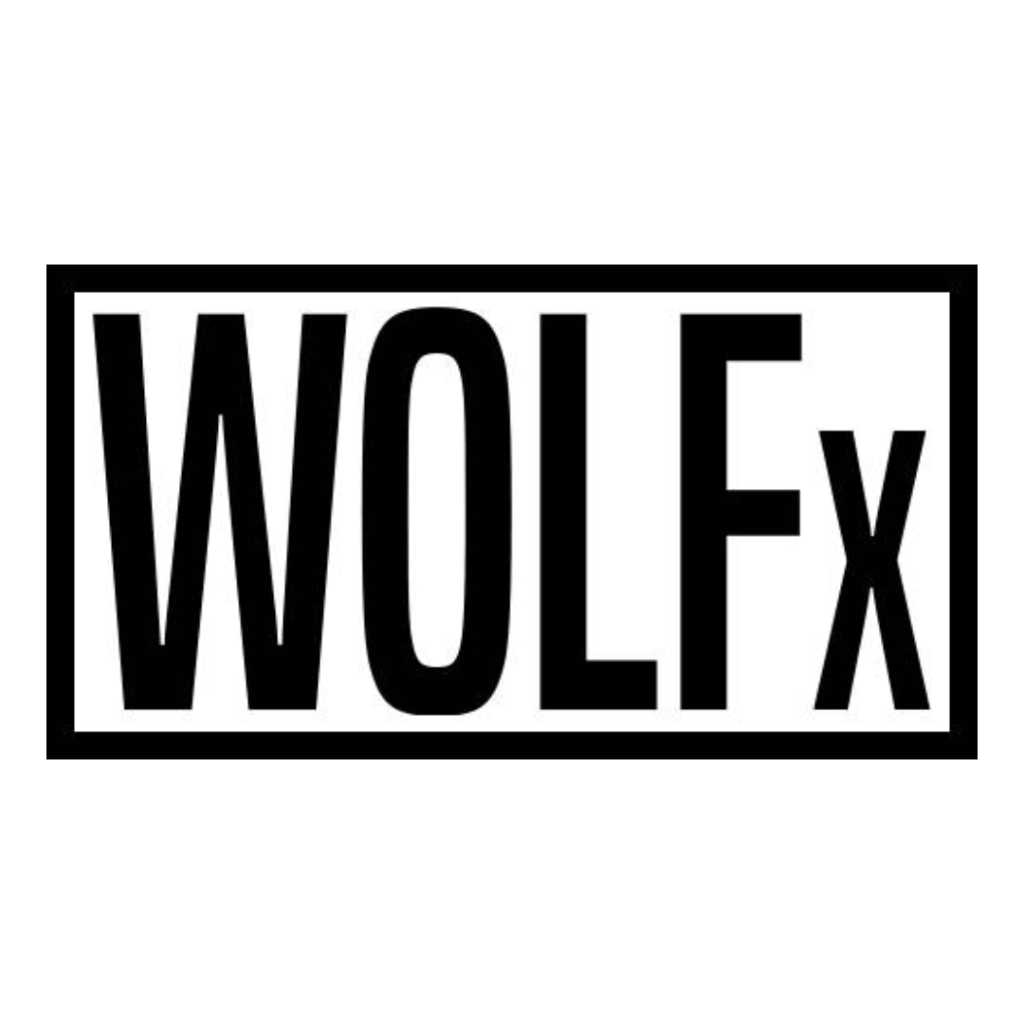Top 10 Django Packages
Open-source Django projects for more efficient backend development.
all
django
backend

Top 10 Best Django Packages
Django Web Framework is the go-to web development framework at WOLFx Digital Agency when it comes to back-end development. With such a powerful framework under our arsenal, we leverage a lot of benefits in terms of quicker prototyping, super fast delivery, security, robustness, scalability, and versatility.
Another advantage of choosing Django is its vast, helpful and vibrant community that contributes, maintains, and constantly creates new features, packages, and plugins that go well with the framework.
At WOLFx Digital Agency we do make use of a lot of these open source projects because for obvious reasons - “They are amazing”.
While making a compilation list of what awesome Django packages & projects we wanted to include in this article we did a lot of contemplation and finally concluded on these 10 Django packages which we often use in our web development projects.
1. Django REST Framework (DRF)
Django REST Framework or DRF as commonly abbreviated by the Community is a gem of a package. DRF is a powerful tool that allows you to build APIs in Django with incredible speed and flexibility. We all know that because of Django’s ORM it is very easy to define database schemas via Model(models.py). DRF leverages this simple semantics of models to give you an API where you do not have to worry about serializing, authentication & authorization.
DRF provides a browsable API with a front end from where you can test, browse and execute the API with a breeze while you are developing, this is a huge usability win for developers.
DRF has support for Authentication policies including packages for OAuth1a and OAuth2 as well as third-party token-based authentication like Json Web Tokens (JWT).
The built-in Serialization supports both ORM and non-ORM data sources so you can make your data formatted in your desired way from an existing database that does not support ORM.
One of the great features of DRF is its flexibility, it allows you to customize the entire use case such that you are not bound by the package’s workflow, you can omit the powerful features and just use regular function-based views.
It goes without saying that DRF has great community support and is properly documented because of all the closed-to-opened issues ratio this package has in its GitHub repository, along with thousands of questions answered on StackOverflow.
2. Django Tenants
If you want to make a Software as a Service (SaaS) application in Django, then the Django Tenants package is one of the best projects to choose. This project is a fork to an older and now unmaintained project called Django Tenant Schemas.
Django Tenants allows you to create a schema separated/semi-isolated database for multiple tenants in your project, in simpler terms your project will have a different section of the database for each tenant you have. All these tenants will have their own hierarchy of user permissions and a separate subdomain in your url to access any particular tenant. So if “Tenant A” has a user named “tenant-a-user” then this user can only login and access Tenant A’s dashboard and the same goes for Tenant B and their respective users.
With Django Tenants, you can create
- Multi-Vendor eCommerce.
- Platform management systems.
- EduTech Platforms.
- Organization-driven content management system.
- Sales monitoring tool.
- A complex marketing tool.
- Software ecosystems.
- Customer Relationship Management.
- And Much More.
Django Tenants have no limit to how many tenants one application has. You can use this single application to serve multiple instances of organizations.
You can declare Tenant specific apps and Shared Apps separately within the project so that the only apps which are supposed to get segregated per Tenant will be mentioned inside our Tenant specific app list whilst the common apps can be in a shared space and can perform inter-tenant communication.
The most powerful feature of this tool is the low code changes you need to do in your existing app to make it a multi-tenant architecture.
3. Django Tenant Users
Django Tenant Users has a similar name to our previously mentioned package because Django Tenant Users is a package made for Django Tenants. This package allows you to specify a single-point user authentication and authorization method for your multi-tenant application.
With Django tenant users your multi-tenant application can have users who are a part of multiple Tenants, it does this by creating a single login interface but separate permission block for each tenant, in this way you can have a user whose login id password can work across all Tenants.
The package uses Django’s already powerful user and permission modules.
4. Django AllAuth
Django AllAuth is by far one of the most loved community projects because this package consists of almost all the 3rd party social login mechanisms implemented in it, along with email verification of users in native registration.
There are currently more than 100 social authentication flows implemented in the package, which means your application can support not only major social logins like Google or Facebook but also Amazon, Apple, Azure, Baidu, Bitbucket, Bitly, Discord, Dropbox, Evernote, Firefox, Github, Gitlab, Instagram, MailChimp, LinkedIn, Microsoft, Patreon, Paypal, Pinterest, Reddit, Robinhood, Salesforce, Shopify, Slack, SoundCloud, Spotify, Stack Exchange, Steam, Stripe, Telegram, Trello, Tumblr, Twitch, Twitter, Yahoo, Zoho, Zoom and many more.
The package also allows you to capture additional questions during signup. Users can link multiple social accounts to their single login credentials.
5. Django Widget Tweaks
Django widget tweaks is a lifesaver plugin if you want to edit your forms in Django template rendering, generally in Django if you want to assign an HTML attribute to your form input then you have to override the Widget declaration inside the Form class which creates an ugly looking syntax,
class ExampleForm(forms.Form)
def __init__(self, *args, **kwargs):
super(ExampleForm, self).__init__(*args, **kwargs)
for visible in self.visible_fields():
visible.field.widget.attrs['class'] = 'form-control'
You cannot simply add a custom CSS class to your form widget in a simple way using Django but in Django Widget Tweaks you can do a straightforward append inside your HTML file.
With the help of this Django package, the forms can now have any attributes you want which can be your data-*, class, id, type, on click, required, and much more without writing a single line of python code.
There is also support for chaining multiple attributes appends so that you can have more control over your forms.
6. Pillow
Pillow is not a Django-specific library but a python wide image processing tool however its scope does overlap with Django.
If you want to do anything with an image inside your project then you have to make use of the powerful features provided by this package.
Everything from cropping, image processing, convolving, skewing, optimizing can be done using Pillow.
Apart from the utility it also supports a huge number of image file formats with an optimized way to work with images, so you can rest assured that your images will not be a burden on your Django application.
7. Django Debug Toolbar
The Django Debug Toolbar is a configurable set of panels that display various debug information about the current request/response and when clicked, display more details about the panel's content.
With Django Debug Toolbar you can monitor the requests to their molecular level, you can have an idea about how many DB hits are made, how much CPU utilization was done, what are the headers in a particular request, how many static files were served, how many signals were triggered, etc.
The package comes with a security feature where you can whitelist specific IP addresses so that only requests from that IP can see the debug panel, nobody from an unmentioned IP can see this debug information. Usually, this IP address is set as localhost so that you do not accidentally roll out the debug toolbar in production.
8. Django Import Export
Django Import Export is a solution to import and export your data from your database so that you can take a backup of your entire database or import new data inside a specific table.
One of the best features about this plugin is that it comes coupled with Django’s default admin panel, you just have to mention the package in your Installed Apps list and do a few minor adjustments inside your admin.py and voila you are now ready to back up your database whenever you like.
The package supports CSV, JSON, YAML, Pandas DataFrames, HTML, TSV, Excel, DBF, and ODS data formats.
9. Django CK Editor
Django CK Editor is a package we often use in our Django Web projects because it is a popular, flexible, and easy-to-implement WYSIWYG editor which is based on the original Javascript-based CK Editor plugin.
Django CK Editor is compatible with Django’s built-in admin panel and provides a lot of features for your usual text input, apart from generic text beautifications like bold, italic, and underline you have a rich interface from where you can add tables, text color, highlight color, and media upload, anchor, smiley, special character, horizontal row and even edit the source code in HTML format.
There are a lot of configuration options from where you can add and customize what features you need in your CK Editor.
10. Django Shape Shifter
Django Shape Shifter is an underdog when compared to other mentions in this list, that’s because it is a less talked about package in the community which targets to solve a niche yet a painful problem that all lazy developers have.
This amazing package allows you to theoretically add unlimited forms inside a single Class-Based View. One of the powerful aspects of Django’s ideology is its DRY philosophy, which it fulfills via a lot of Generic Class-Based Views. These views are barebones to what any web application might require in order to serve data flow although these generic views are able to serve the majority of developer’s requirements, they do not serve a small segment of use cases where one requires multiple forms in a single page.
This is where Django Shape Shifter shines in, it allows us to use Django’s DRY philosophy in full action. It is compatible with Model Forms, User-defined forms, and even a combination of both.
Conclusion:
There are a lot of awesome initiatives taken up by the Django community to provide best-in-class development experiences to quickly ship out results with perfection. This list is a compilation of such packages, and they are not in any specific order or rank. All of these Open Source projects are backed by bright individuals who come together as a collective unit and do it for the community and we at WOLFx Digital Agency are grateful for their contribution.

